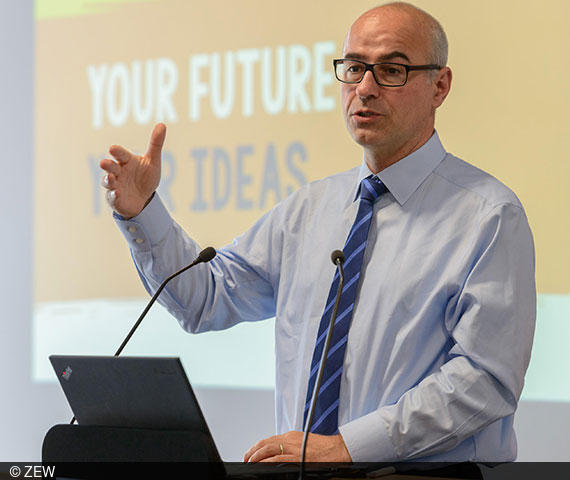A Budget for European Added Value
OpinionAlongside the Brexit negotiations, Brussels and the EU Member States have another important issue on their minds this year, namely the proposal for the next Multiannual Financial Framework (MFF), which is set to be presented by EU Commissioner for Budget and Human Resources Günther Oettinger by the end of May. The MFF will set the volume and areas of expenditure for the EU budget for the next seven years and ideally should be approved before the European elections in 2019. The MFF will reveal the areas in which the EU wishes to focus its attention in the years following 2020.
Reconciling the various interests and desires of the EU and its Member States with limited funds is always a challenge, but the current negotiations are taking place under particularly strained circumstances. The gap in the budget that will be left by the United Kingdom – the fourth largest contributor to the EU budget after Germany, France and Italy – when it leaves the EU amounts to some 13 billion euros a year. This is equivalent to around 10 per cent of the EU’s total budget of 135 billion euros in 2017. Of course, when the UK leaves the EU, the payments the United Kingdom receives from the Union, which run to around 7 billion euros, will also stop. There are, however, a great many ideas and requests for areas in which the EU should be spending more of its money, including defence, border security and investment.
With his demand that any future area of EU expenditure deliver “European added value”, Commissioner for Budget and Human Resources Günther Oettinger has given the negotiations a crucial stimulus which, if used correctly, can serve as a guide for any pending decisions. The term “European added value” also shifts the focus onto truly communal missions. As part of a study carried out in cooperation with the Bertelsmann Stiftung, we at ZEW have attempted to define this European added value. According to our definition, one reason to shift certain tasks to the EU level would be resulting in returns to scale, as one could imagine would be the case for armaments orders.
An European added value could strengthen the legitimacy of the EU
For instance, it makes more financial sense for the EU as a whole to pay for the development of new military helicopters than for each individual country to develop its own helicopter. Another significant reason is the provision of cross-border public goods, such as in the case of shared border security. Currently all the Member States benefit from border security, but the costs are borne exclusively by those Member States on the EU’s external borders. The responsibility for tasks that do not fulfil these criteria should, according to the principle of subsidiarity enshrined in Article 5 of the Lisbon Treaty, remain at the national level.
Applying these criteria for European added value consistently to spending proposals would help to strengthen the legitimacy of the EU. If policy-makers take this concept to heart, they will soon find it hard to justify why so many funds – almost 40 per cent of the entire EU budget – still go to the common agricultural policy (CAP). This expenditure brings neither returns to scale nor a cross-border public good.
The Commissioner has proposed a 10 to 20 per cent increase in Member State contributions to the EU, which currently amount to roughly one per cent of each country’s GDP, with the aim of expanding the EU budget by at least 16 billion euros a year. During coalition talks in Germany, the CDU, CSU and SPD have agreed in principle to increase Germany’s contributions to the EU budget. Though increased contributions may be inevitable, making such a hasty agreement reduces Germany’s incentive to push back on questionable positions in the EU budget. Furthermore, if the EU does not begin to cut back on agricultural subsidies, it will be difficult for Brussels to claim to be presenting a budget with a clear focus on “European added value”.
This article was originally published online by EurActiv, 7 February 2018.

